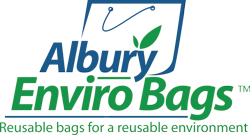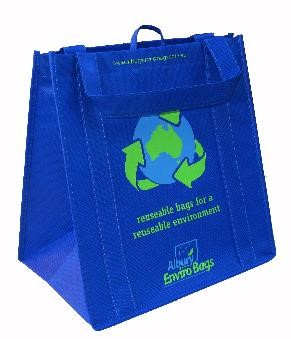Non-woven Polypropylene Bags have long been seen as the budget friendly reusable bag (1, 2, 3, 4, 13, 14, 15 ).
These bags have long been favoured by major supermarkets and environmental organisations, not just because of their low cost, but also due to their long life span. Non-woven polypropylene bags create less litter and use significantly less material resources and energy resources than paper bags, cotton bags, or single use plastic bags and do not require the huge water resources and agricultural chemicals required by cotton. On the downside, non-woven plastic polypropylene bags are manufactured from polypropylene gas, a by-product of oil refining and are therefore made from non-renewable resources.
Microplastics & eco-toxicity
Non-woven polypropylene is not biodegradable or compostable and may take many years to break down in the environment and this is a matter of increasing concern for all plastics. Plastics, such as non-woven polypropylene, degrade in the environment into smaller and smaller pieces of plastic called microplastics (19). Microplastics are so tiny they are not visible to the naked eye and they therefore represent an irretrievable accumulation of plastic in the eco system. Further, microplastics have been found in tap water, in beer, in bodily fluids, and in the air (19, 20, 21), even though the science of microplastics is only new and much remains to be learned. Presently, we know (19)“we are all drinking, eating and breathing microplastic every day”, but we have yet to learn the consequences of this.
It is for these reasons that some communities are banning the use of non-woven polypropylene bags ( 17, 18).
Notwithstanding these facts however, non-woven polypropylene bags are often considered to have a relatively low environmental impact, because of their long life and reusability, and the fact that they degrade into smaller pieces of plastic more quickly than many other types of plastics. According to Sustainability Victoria, “The reusable, non-woven plastic (polypropylene) “Green Bag’ was found to achieve the greatest environmental benefits.” As CSIRO research scientist, Dr Mike O’Shea points out, the main environmental advantage of the non-woven polypropylene ‘green bag’, is its reusability:
“the green bag’s only environmental credential is that it is not the single-use high-density polyethylene plastic bag still given out in most shops and supermarkets.”
Jute vs Non-Woven Polypropylene (5, 6, 7, 8, 9, 10, 11, 12, 22, 23)
Often the choice between these two fabrics depends upon budget, jute bags typically costing around 2-3 times more than non-woven bags when the higher freight costs are also included. Jute’s competitiveness with polypropylene, from which non-woven green supermarket bags are manufactured, is related primarily to the environmental footprint of each product. Jute is a natural plant fibre which contributes to the livelihood of many farmers in developing countries whereas polypropylene is a totally synthetic non-compostable plastic manufactured by the petrochemical industry.
Both bags have been endorsed by various organisations. Burwood Council, Ipswich City Council, and Clean Up Australia have endorsed jute bags. According to the United Nations in their report entitled Jute and Hard Fibres: Overview of Major Current Issues, jute has the following advantages as compared to non-woven polypropylene.
- Production of polypropylene fibre requires 10 to 20 times more energy than jute fibre.
- Production of 1 ton of polypropylene produces 3.7-7.5 tons of CO2 whereas jute production has a negative impact on CO2 production.
- Jute is a totally renewable resource whereas polypropylene is derived from non-renewable resources.
- Jute fibre is biodegradable whereas polypropylene is not biodegradable and causes environmental accumulation of plastic and releases cancer causing compounds.
The environmental advantages of jute are however negated by the use of mineral oil during the processing of jute fibre, and the fact that most consumers prefer jute which is lined with plastic. Plastic free or unlined jute has the vitally important advantage that it does not contribute to accumulation of microplastics in the environment, unlike non-woven polypropylene.





